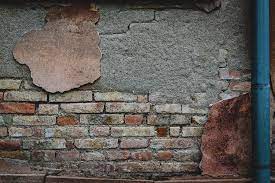The Art And Necessity Of Masonry Tuckpointing

Masonry has long been the foundation of magnificent architecture, from the stately façade of ancient buildings to the cobblestone streets of centuries-old communities. However, even the most durable buildings can eventually deteriorate due to the quiet erosion of time, weather, and the elements, endangering the fundamental foundation of our architectural legacy. Here, the craft and necessity of masonry tuckpointing stand out as the unsung heroes, providing a painstaking and revolutionary counterbalance to time's inexorable march forward.
For generations, masonry has been a prominent feature in architecture due to its ageless elegance and structural stability. Even the strongest buildings, though, may be weakened with time. This is where masonry tuckpointing, both an art and a necessity, comes into play, revitalizing aging facades and extending the life of ancient structures.
The precise and expert art of tuckpointing entails repairing and revitalizing brick wall mortar joints. The mortar that holds bricks or stones together can be eroded over time by weathering and degradation, endangering the wall's overall structural stability. Repointing, or tuckpointing, solves this problem by taking out old, crumbling mortar and replacing it with freshly mixed mortar that is meticulously matched to the original's color and texture.
Tuckpointing is a precision symphony that calls for a keen eye for detail, skillful craftsmanship, and a thorough understanding of masonry materials. The following steps are usually involved in the process:
Assessment and Preparation
To find regions where the mortar has deteriorated, a comprehensive assessment of the masonry building is carried out. Using specialist equipment, damaged or loose mortar must be carefully removed as part of the preparation process.
Color-Matched Mortar
Expert craftspeople blend a mortar mixture that exactly mimics the color and feel of the mortar that already exists. The preservation of the structure's visual coherence depends on this meticulous attention to detail.
Repointing
Using a pointed trowel, fresh mortar is put to the joints with precision. The aim is to create a product that is both coherent and aesthetically pleasing by achieving a seamless mix with the surrounding brickwork.
Finishing Touches
To guarantee a consistent finish, brushing and tooling the mortar is the last process. This improves the structure's resilience to weather while also making it seem better.